The new wave of Google is officially here. It’s time to seize the day and make those website optimizations before your site gets left behind.
Microsoft vs. Google Ads: Which Platform Is Right for Your Business?
When it comes to digital advertising, the two major players that come to mind are Microsoft Ads and Google Ads. Both platforms offer robust tools for businesses to reach their target audiences online, but deciding between them can be a daunting task. In this guide, we'll dive into the key differences between Microsoft Ads and Google Ads to help you determine which platform is better suited for your business goals.
The Best AI Productivity Tools for Digital Marketers
Mastering YouTube Campaigns for Your Business Needs
The Guidelines of Advertising on Pinterest
When considering digital marketing, it's common to focus solely on leading platforms like Google and Meta. However, this approach limits your marketing strategy, instead - diversifying across various platforms significantly enhances the overall success of a program. Among these opportunities, Pinterest emerges as a powerhouse, boasting over 450 million monthly active users globally. The visually driven platform serves as a haven for inspiration and discovery, making it a prime space for businesses to showcase their products and services through advertising.
Understanding Pinterest Advertising
Pinterest, a visual social media platform, enables users to explore images and videos aligned with their interests, saving them onto digital bulletin boards by topic. Known as "pins," these saved images or videos often originate from blogs, while Pinterest ads typically direct users to e-commerce websites. Users can curate their boards or navigate to linked websites for further exploration. Additionally, users engage with each other's boards and pins, potentially following based on shared interests.
Particularly useful for businesses in sectors like fashion, home decor, food, and crafts, Pinterest's focus on visual content facilitates the showcasing of products and ideas in an inspiring manner. Through strategies such as pin optimization, board curation, and leveraging Pinterest's tools, businesses can effectively engage with its vast and committed user base. Many users utilize the platform for product discovery and purchases. Ultimately, Pinterest marketing presents brands with a distinctive opportunity to cultivate awareness, drive conversions, and nurture enduring relationships with their target audience.
The Dos:
Focus on High-Quality Visuals: Pinterest is a visual-centric platform, so invest in eye-catching images and graphics that resonate with your target audience. High-resolution, vertically oriented pins tend to perform best, capturing users' attention as they scroll through their feeds.
Optimize Pin Descriptions and Keywords: Craft compelling pin descriptions that not only describe your product but also incorporate relevant keywords and hashtags. This helps improve the discoverability of your pins and ensures they reach users actively searching for similar content.
Utilize Rich Pins: Take advantage of Pinterest's Rich Pins feature to provide additional context and information about your products, such as pricing, availability, and direct links to your website. Rich Pins enhance the user experience and streamline the path to purchase.
Leverage Pinterest Analytics: Regularly monitor Pinterest Analytics to gain insights into the performance of your pins and campaigns. Analyze metrics such as impressions, clicks, and saves to refine your advertising strategy and optimize your content for better results.
Embrace Seasonality: Align your advertising efforts with seasonal trends and holidays to capitalize on heightened consumer interest. Create themed boards and promotions that resonate with the current cultural moment, driving engagement and sales.
The Don'ts:
Avoid Overly Promotional Content: Balancing promotional content with inspiring, value-driven pins is crucial. Overly salesy content risks alienating users, and diminishing brand credibility. Pinterest users value authenticity and creativity, so focus on providing value through inspiring content.
Steer Clear of Low-Quality Images: Blurry, pixelated images can detract from the user experience and undermine the credibility of your brand. Invest the time and resources necessary to create visually appealing pins that leave a lasting impression on your audience.
Mind Pinterest SEO: Neglecting Pinterest SEO can limit the discoverability of your pins and hinder your advertising efforts. Take the time to optimize your pins with relevant keywords, descriptions, and metadata to improve their visibility in search results.
Refine Targeting Strategies: Precision targeting is key to reaching the right audience on Pinterest. Avoid casting too wide a net with your advertising campaigns and instead focus on targeting users who are likely to be interested in your products based on their interests, behaviors, and demographics.
Don't Neglect Mobile Optimization: With the majority of Pinterest users accessing the platform via mobile devices, it's essential to ensure that your pins and landing pages are optimized for mobile viewing. A seamless mobile experience enhances user engagement and increases the likelihood of conversion.
Advertising on Pinterest offers businesses a unique opportunity to connect with consumers in a visually engaging and compelling way. By following these guidelines and best practices, marketers can maximize the impact of their advertising efforts on Pinterest, driving brand awareness, engagement, and ultimately, conversions. Remember, success on Pinterest lies in creating content that resonates with users and adds value to their Pinterest experience. Reach out to Revel if you are interested in learning more, and pin it to win it!
Photo: © Brett Jordan
The Importance of Creating Confident Consumers through PPC Ads
The Rise of Social Media Platforms as Search Engines, and What this Means for SEO
Recently, we have witnessed a trend that signifies that Google might not necessarily always be the go-to search engine when an individual embarks on a purchase journey. Users are also treating social media platforms as search engines, oftentimes looking to historically non-traditional sites such as TikTok, Pinterest, and Instagram to gather the information they are seeking regarding a certain product or service.
Mastering Affiliate Marketing: Effective Content Strategies for Success
There has never been a better opportunity to monetize your content as an affiliate marketer. Nearly 40% of affiliate revenue in the U.S. is earned through blogs & content and the opportunities are increasing every year. Let's dive into some proven content strategies that work wonders for affiliate marketing, from informative product reviews to engaging listicles.
Tips and Tricks for B2B Lead Generation Success
A Cookieless Future
Amazon Marketplace
Affiliate Deep Linking
Sender Requirements
With changes coming across all advertising channels, email is no exception. In February 2024, Google and Yahoo had placed certain requirements that advertisers should be aware of for strategy going forward. Need help getting started? Reach out to your Revel account team to identify any areas of non-compliance within your email advertising program.
10 Custom Labels for Google Merchant Feeds
The Future of TV Advertising: How CTV Can Supercharge Your Digital Strategy
With countless streaming services, CTV advertising is becoming a larger part of the marketing mix for advertisers in 2024. Predictions say CTV ad revenue will grow 13.8% in 2024, after a 10.9% increase the previous year (AdExchanger). It can be daunting navigating this evolving landscape with countless options and varying costs. Which platform or network is best to yield a return? How can I best target my brand's core demographic and also new customers? What format performs the best?
To start off, CTV Advertising, or Connected TV advertising, is the placement of ads on streaming content through internet-connected devices, such as Smart-TVs or gaming consoles. In 2023, there were an estimated 111 million CTV households in the U.S. (Statista), so that’s quite a few eyeballs you can reach and it's only growing.
What are some of the benefits of CTV advertising?
Targeting: CTV platforms usually offer sophisticated targeting capabilities, letting advertisers target specific demographics, interests, and behaviors of the viewers. You can also target devices down to their type, brand, model, etc.
Reach: As mentioned above, there are many consumers with CTV, and traditional TV viewers are increasingly moving towards digital streaming for their content.
Engagement: CTV users are typically highly engaged. 97% of video ad impressions viewed on CTV were watched until completion in 2021. There are also ad format options that are interactive, which can further enhance engagement.
Measurable Results: CTV advertising offers robust measurement capabilities, allowing advertisers to track key performance metrics like impressions, completion rates, conversions and more. You can also access ad inventory, device price analysis and more in real time.
How do you buy CTV ads?
Programmatic: This involves using automated technology (usually a DSP) to purchase ads in real-time auctions. Marketers often find you have a broader reach across various platforms and lower costs.
Platform Direct: Buying directly on the CTV platform, such as Roku, Amazon Fire Stick TV, etc. The process of buying will vary depending on the platform but this method can offer greater control over placement, targeting and pricing.
Publisher Direct: Buying directly from the OTT service providers such as YouTube or Tubi. This method can sometimes limit your reach as these platforms have unique audience segments. This method can also require more time due to different formats being available on different platforms.
What are some of the CTV ad formats?
Instream Video Ads (3 different types):
Pre-roll ads: These run before the video content. Typically range from a few seconds to 30 seconds and aim to capture the viewer’s attention before the content begins.
Mid-roll ads: These run during breaks within streamed content, similar to a commercial break you would see in traditional television.
Post-roll ads: These run after the streaming content has finished. They are the least common of the three.
Interactive Video Ads: These allow the viewer to interact with the advertisement by engaging with on-screen elements such as polls, clickable hotspots, quizzes, etc. this can increase ad engagement and brand affinity.
Display Ads: These are on the home screen in a Smart TV, it will display your advertisement on top of other content options. They are somewhat like a digital billboard, and can also be inline placements.
While CTV advertising is multifaceted and a more recent addition to the overall marketing mix, advertisers should consider it as a way to reach a growing audience, drive better engagement, and position themselves for success in the age of digital television.
Photo: © Vertigo3d
Pinterest's 2024 Opportunities: A Comprehensive Strategy for Success
Pinterest is a beacon of opportunity for businesses seeking to expand their horizons this year. In Q4 2023 the Platform saw a “12% surge in revenue to $981 million and an 11% year-on-year increase in global monthly active users reaching an all-time high of 498 million,” which positions Pinterest as a compelling investment option for media diversification in 2024.



















